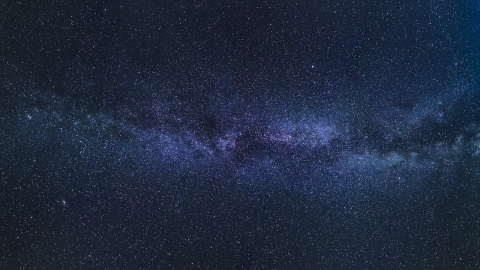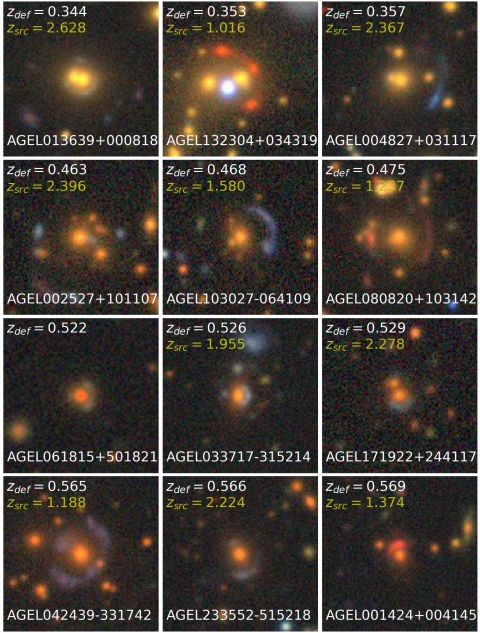

27 September 2022
5 min read
Earlier this year a machine learning algorithm identified up to 5,000 potential gravitational lenses that could transform our ability to chart the evolution of galaxies since the Big Bang.
Now an international team of researchers - including Dr Thomas Collett from the University of Portsmouth’s Institute of Cosmology and Gravitation - has assessed 77 of the lenses using the Keck Observatory in Hawaii and Very Large Telescope in Chile. The team has confirmed that 68 out of the 77 are strong gravitational lenses spanning vast cosmic distances.
Gravitational lensing was first identified as a phenomenon by Einstein who predicted that light bends around massive objects in space in the same way that light bends going through a lens.
In doing so, it greatly magnifies images of galaxies that we would not otherwise be able to see.

Pictures of gravitational lenses from the AGEL survey. The pictures are centred on the foreground galaxy and include the object name. Each panel includes the confirmed distance to the foreground galaxy (zdef) and distant background galaxy (zsrc)
The research published today in the Astronomical Journal, was led by astronomer Kim-Vy Tran from ASTRO 3D and the University of New South Wales, Australia. The paper presents spectroscopic confirmation of strong gravitational lenses previously identified using Convolutional Neural Networks, developed by data scientist Dr Colin Jacobs of Swinburne University, Australia and Portsmouth’s Dr Thomas Collett.
Dr Tran said: “Our spectroscopy allowed us to map a 3D picture of the gravitational lenses to show they are genuine and not merely chance superposition.”
The work is part of the ASTRO 3D Galaxy Evolution with Lenses (AGEL) survey.
“Our goal with AGEL is to spectroscopically confirm around 100 strong gravitational lenses that can be observed from both the Northern and Southern hemispheres throughout the year,” she added.
Dr Tran’s paper is the result of a collaboration spanning the globe with researchers from Australia, the United States, the United Kingdom and Chile.
Dr Collett said: “Gravitational lenses are cosmic magnifying glasses we can use to observe far away galaxies, but finding them has been hit and miss.
“The exciting aspect of this research is that it confirms our ability to correctly identify lenses in giant surveys. We reduced a billion object survey to a few hundred of these very rare but extremely useful targets.
“The Universe is providing us with these cosmic telescopes that we can use to see objects that are millions of light years away more clearly, giving us the best possible view of primitive galaxies.”
The Universe is providing us with these cosmic telescopes that we can use to see objects that are millions of light years away more clearly, giving us the best possible view of primitive galaxies.
Thomas Collett , astrophysicist and cosmologist
Gravitational lensing should also let us ‘see’ invisible dark matter that makes up most of the Universe.
Dr Tran said: “We know that most of the mass is dark. We know that mass is bending light and so if we can measure how much light is bent, we can then infer how much mass must be there.”
Having many more gravitational lenses at various distances will also give us a more complete image of the timeline going back almost to the Big Bang.
“The more magnifying glasses you have, the better chance you can try to survey these more distant objects. Hopefully, we can better measure the demographics of very young galaxies,” explained Dr Tran.
“Then somewhere between those really early first galaxies and us there's a whole lot of evolution that's happening, with tiny star forming regions that convert pristine gas into the first stars to the sun, the Milky Way.
“And so with these lenses at different distances, we can look at different points in the cosmic timeline to track essentially how things change over time, between the very first galaxies and now.”
